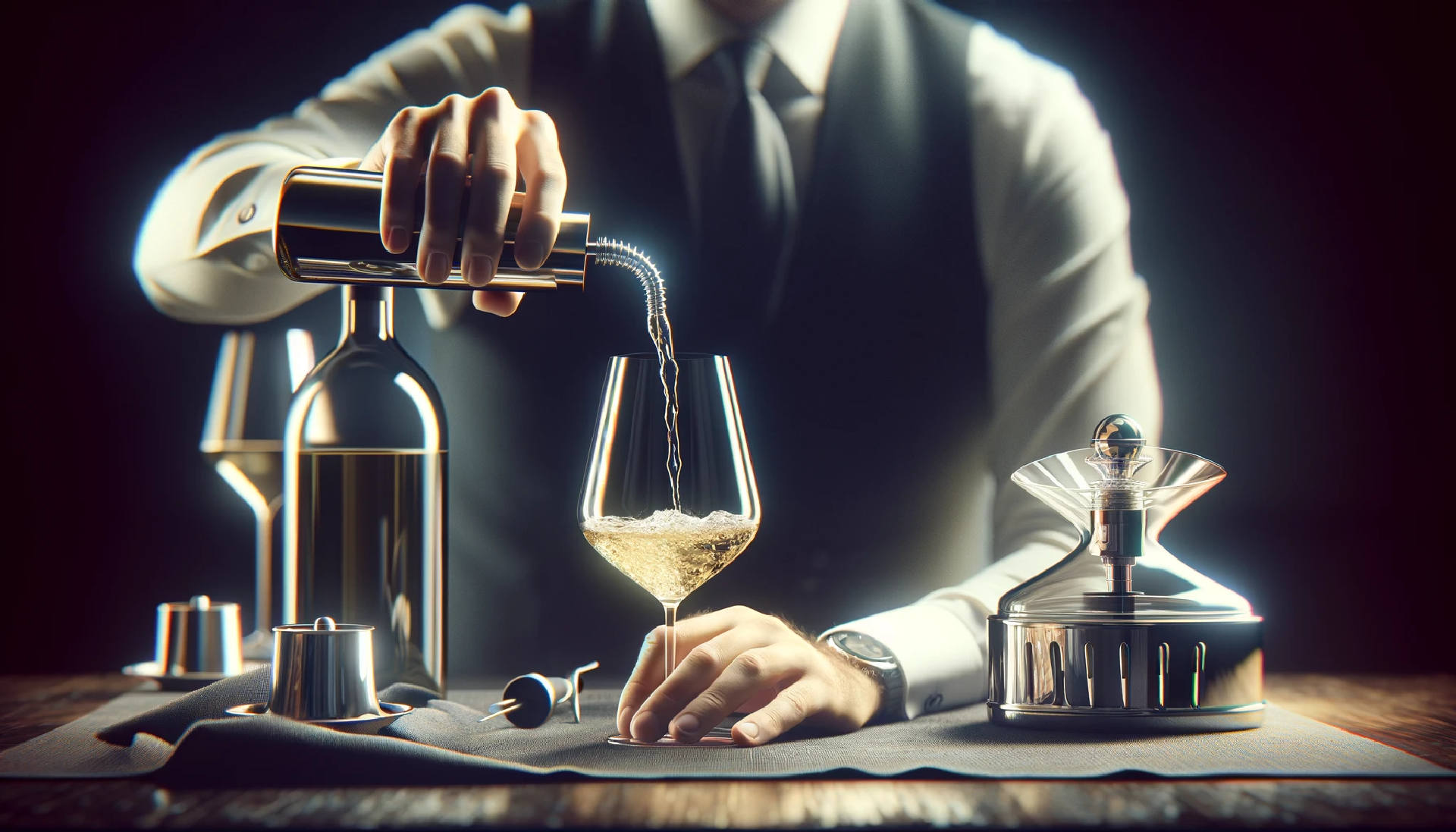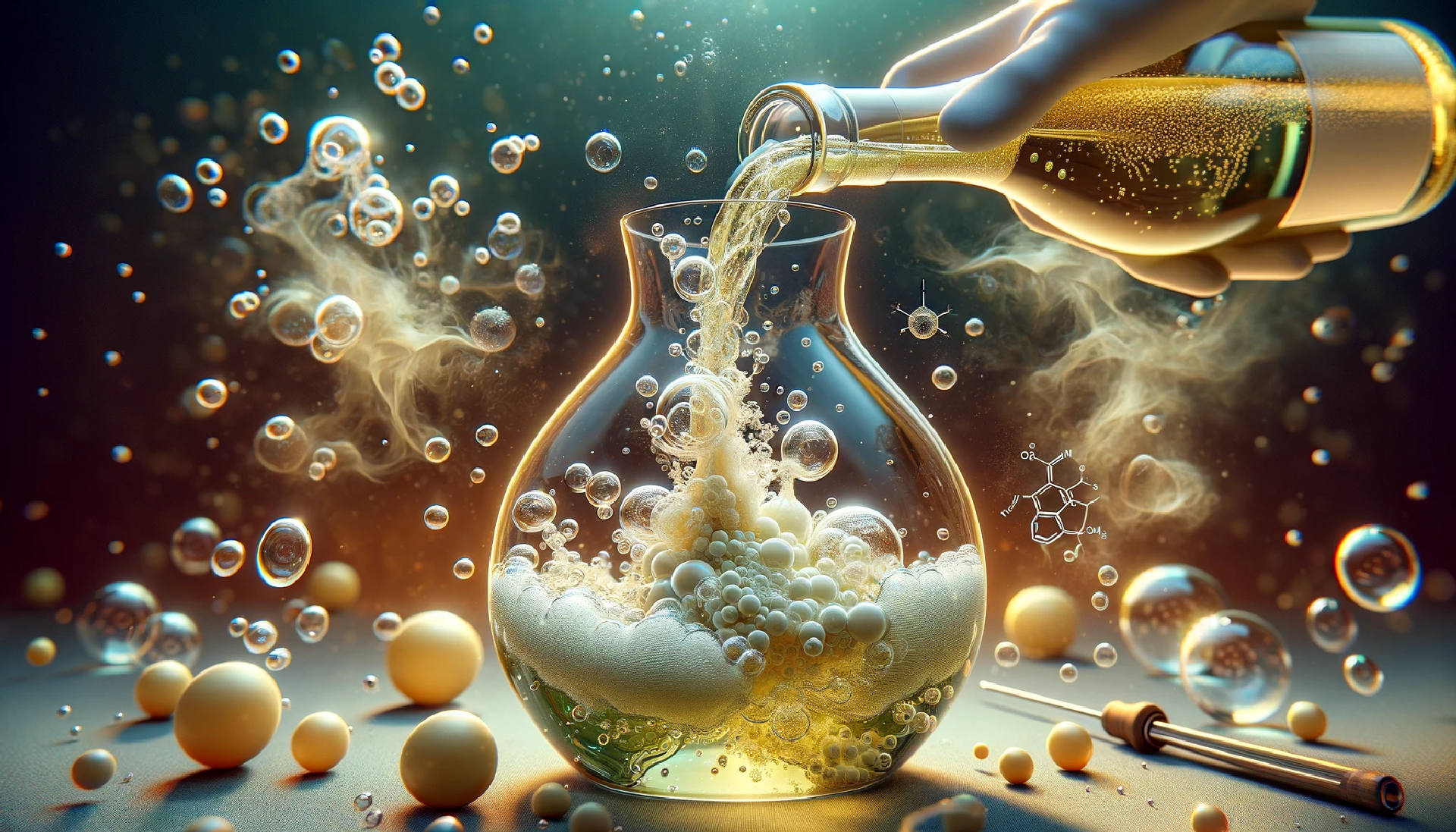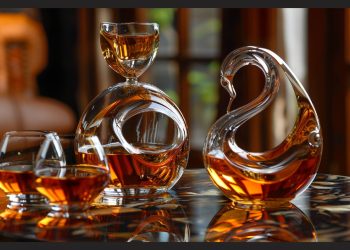Aerating white wine has long been a topic of debate among wine enthusiasts. Some argue that it is unnecessary, as white wine is already crisp and refreshing straight from the bottle. However, others believe that aeration can enhance the flavors and aromas, bringing out the best in the wine.
In this article, we will explore the reasons why you might consider aerating your white wine, the benefits it can offer, and the various methods you can use. Whether you are a seasoned wine connoisseur or simply enjoy a glass of white wine on occasion, understanding the process of aeration can help you appreciate the complexities and nuances of this beloved beverage. So, do you aerate white wine? Let’s find out.
Key Learnings
- Aerating white wine enhances flavors and aromas
- Aeration softens harsh tannins and releases complex aromas and flavors
- Aeration introduces oxygen, triggering oxidation and softening tannins
- Different methods of aeration, such as decanting and using an aerator, can enhance the flavor profile of white wine.
Why Aerate White Wine
Aerating white wine enhances its flavors and aromas, allowing the wine to reach its full potential. The process of aeration involves exposing the wine to air, which helps to release volatile compounds and soften harsh flavors. Various aeration techniques can be used, such as decanting the wine into a wide-bottomed glass or using an aerator that introduces air into the wine as it is poured. White wines, particularly those with high acidity, can benefit greatly from aeration. The impact of aeration on acidity is twofold.
Firstly, it helps to soften the sharpness of the acidity, making the wine more balanced and pleasant to drink. Secondly, aeration can also help to reveal hidden flavors and nuances that may be masked by the acidity. By aerating white wine, you can enhance its overall taste experience and fully appreciate its unique characteristics.
Benefits of Aerating White Wine
The benefits of aerating white wine can be seen in the enhanced flavors and aromas that are brought out by exposing the wine to air. Aerating white wine has several advantages over simply chilling it. Here are three key benefits:
- Improved Aroma: Aerating white wine allows the aromas to develop and become more pronounced. The exposure to air helps release volatile compounds, creating a more complex and enjoyable olfactory experience.
- Enhanced Flavor: By aerating white wine, the flavors become more vibrant and balanced. It softens the harsh edges and allows the different flavors to integrate better, resulting in a more harmonious taste profile.
- Faster Maturation: Aerating white wine accelerates the aging process, making it more approachable and enjoyable sooner. It can help a young white wine develop characteristics that are typically associated with aging, such as increased complexity and depth.
How Does Aeration Enhance Flavors
Aeration plays a crucial role in enhancing the flavors of white wine. When wine is exposed to air, it undergoes a process of oxidation which helps to soften harsh tannins and release complex aromas and flavors. This allows the wine to open up and develop, resulting in a more enjoyable and nuanced tasting experience.
Aeration and Taste Improvement
Enhancing flavors through the process of aeration involves the interaction of oxygen with the compounds present in white wine. This interaction can significantly impact the aroma and overall taste of the wine. Here are three ways aeration techniques enhance flavors:
- Oxidation: Aeration introduces oxygen to the wine, which triggers oxidation. This process can soften harsh tannins and reduce the perception of bitterness, resulting in a smoother and more balanced taste.
- Volatilization: Aeration allows volatile compounds in the wine to evaporate. This can help to release complex aromas, intensify fruity or floral notes, and enhance the overall aromatic profile of the wine.
- Chemical Reactions: Aeration can facilitate chemical reactions within the wine, such as the transformation of certain compounds into more desirable ones. This can lead to the development of new flavors and the enhancement of existing ones.
Benefits of Wine Aeration
When white wine is aerated, it can significantly enhance the flavors through the process of oxidation, volatilization, and chemical reactions. Aeration techniques, such as decanting or swirling the wine in the glass, allow oxygen to interact with the wine molecules, unlocking a range of aromatic compounds and flavors that were previously trapped. Oxidation, which occurs when the wine comes into contact with air, helps soften harsh tannins and brings out the wine’s full potential.
Volatilization allows the volatile compounds in the wine to evaporate, releasing their aromas and enhancing the overall bouquet. Additionally, chemical reactions that take place during aeration can help balance the wine’s acidity and improve its mouthfeel. These benefits of wine aeration make it an essential step in the white wine pairing process, as it allows the wine to reach its optimal flavor profile and fully complement the accompanying food.

Different Methods of Aeration
One effective way to enhance the flavor and aroma of white wine is by employing various methods of aeration. Aeration allows the wine to interact with the air, opening up its flavors and softening its tannins. There are different techniques and tools for aeration that wine enthusiasts can utilize to achieve the desired results. Here are three sub-lists that delve deeper into the different methods of aeration:
- Decanting: This traditional method involves pouring the wine into a decanter, allowing it to come into contact with the air and breathe.
- Wine aerators: These handy tools attach to the bottle or the glass and infuse the wine with air as it pours, instantly enhancing its flavors and aromas.
- Swirling: A simple yet effective method, swirling the wine in the glass increases its exposure to oxygen, promoting aeration and releasing its full potential.
Decanting Vs. Using Aerator
Decanting and using an aerator are two popular methods of aeration that can greatly enhance the flavor profile of white wine. Decanting, the process of pouring wine into a separate container to allow it to breathe, allows the wine to open up, soften tannins, and release aromas. On the other hand, using an aerator directly in the glass allows for immediate and controlled exposure to air, intensifying the flavors and aromas of the wine. Both methods have their advantages, and the choice between decanting and using an aerator ultimately depends on personal preference and the specific characteristics of the white wine being served.
Decanting Benefits White Wine
The benefits of decanting white wine compared to using an aerator are evident in the enhanced flavors and aromas it brings out. Decanting white wine allows it to breathe and oxidize, which can soften harsh tannins and mellow out any sharp flavors. Here are three reasons why decanting is preferred over using an aerator:
- Preservation of delicate flavors: Decanting white wine gently exposes it to oxygen, allowing it to open up and release its subtle flavors without stripping away its delicate nuances.
- Temperature control: Decanting allows the wine to gradually reach the desired serving temperature, enhancing the sensory experience.
- Sediment removal: Older white wines may have sediment at the bottom of the bottle. Decanting helps separate the clear wine from the sediment, ensuring a smooth and enjoyable drinking experience.
Aerator Enhances Wine Flavor
When comparing the methods of enhancing white wine flavor, the use of an aerator offers distinct advantages over decanting. Aerator benefits include the ability to infuse the wine with oxygen, which helps to open up its aromas and flavors. Unlike decanting, which relies on slow and passive exposure to air, an aerator accelerates the aeration process, allowing the wine to reach its full potential more quickly.
Aeration techniques vary, but the most common method involves pouring the wine through the aerator, which exposes it to a controlled amount of air and allows it to mix and mingle, releasing its bouquet and enhancing its taste. This technique is particularly useful for young and tight white wines, as it helps to soften their tannins and bring out their vibrant flavors. Ultimately, using an aerator can greatly enhance the overall experience of drinking white wine.
How Long Should You Aerate White Wine
To achieve optimal flavors and aromas, it is important to determine the appropriate duration for aerating white wine. The aeration time can vary depending on the specific wine and personal preference, but there are general guidelines to consider.
- Light-bodied white wines: These wines benefit from a short aeration time, typically around 15-30 minutes. This allows them to open up and release their delicate aromas without losing their freshness.
- Full-bodied white wines: These wines often require a longer aeration time, ranging from 30 minutes to an hour. This allows the wine to soften and develop more complex flavors and aromas.
- Aeration techniques: There are various ways to aerate white wine, such as using a decanter or a wine aerator. Experiment with different techniques to find the one that works best for you and your wine.
Best White Wines for Aeration
Which white wines are best suited for aeration? When considering the best white wines for aeration, it is important to understand that not all varieties benefit from this process. Full-bodied, oak-aged white wines, such as Chardonnay and Viognier, tend to benefit the most from aeration. These wines often have complex flavors and aromas that can be further enhanced through aeration, allowing them to open up and develop more fully.
Aeration methods, such as decanting or using an aerator, can help soften the tannins and release the wine’s bouquet. However, it is important to note that lighter, delicate white wines, such as Sauvignon Blanc or Riesling, may not require aeration as they are best enjoyed fresh and vibrant. Ultimately, the best white wines for aeration are those with structure and depth, which can benefit from exposure to oxygen.
Tips for Aeration
Aeration of white wine can be achieved through various methods, and understanding the proper techniques can greatly enhance the overall experience of enjoying these wines. When it comes to aerating white wine, here are some tips to keep in mind:
- Decanting: Pouring the wine into a decanter allows it to be exposed to more oxygen, enhancing its aromas and flavors.
- Swirling: Swirling the wine in the glass helps to introduce air into the wine, promoting aeration.
- Use an aerator: A wine aerator is a useful tool that allows for immediate aeration as the wine is poured, enhancing its qualities.
It is recommended to aerate white wine for approximately 15 to 30 minutes before serving. This allows the wine to open up and develop its full potential, revealing its unique characteristics. By employing these aeration techniques and following the recommended aeration time, wine enthusiasts can elevate their white wine experience to new heights.
Unveiling the Nuances of White Wine: The Art of Aeration
The debate surrounding the aeration of white wine has long been a source of intrigue for wine enthusiasts. While some argue it is unnecessary, others champion its ability to unlock a wine’s hidden potential. This exploration delves into the science and experience behind white wine aeration, empowering you to make informed decisions for your next glass.
A Symphony of Flavors: The Science Behind Aeration
Aeration, the act of introducing air to the wine, plays a crucial role in enhancing its sensory profile. This seemingly simple process triggers a cascade of chemical reactions within the wine. Oxygen, the key player, interacts with various compounds, leading to:
- Oxidation: This softens harsh tannins, often found in fuller-bodied white wines like Chardonnay, bringing about a smoother and more balanced taste.
- Volatilization: Volatile aromatic compounds trapped within the wine are released, leading to a more expressive and complex bouquet. Think of the delightful floral or citrus notes becoming more pronounced.
- Chemical Reactions: Aeration facilitates the transformation of specific compounds into more desirable ones, further enriching the wine’s flavor profile.
While the science provides a compelling explanation, the true test lies in the tasting experience.

Unlocking the Potential: When to Embrace Aeration
Not all white wines benefit equally from aeration. Generally, full-bodied, oak-aged varieties like Chardonnay, Viognier, and Chenin Blanc stand to gain the most. These wines possess complex flavor profiles and a touch of tannins, making them prime candidates for unlocking their potential through aeration.
Lighter-bodied white wines, such as Sauvignon Blanc and Riesling, are best enjoyed in their youthful vibrancy and may not require aeration. Experimentation is key – try aerating a small portion of the wine and compare it to the unaerated version to discover your preference.
The Art of Aeration: Techniques and Timing
Several methods can be employed to aerate white wine:
- Decanting: This traditional approach involves pouring the wine into a decanter, allowing it to “breathe” for 15-30 minutes for full-bodied whites and 10-15 minutes for lighter styles.
- Aerators: These handy tools infuse the wine with air while pouring, offering a quicker and more controlled approach.
- Swirling: A simple yet effective technique, swirling the wine in the glass gently increases its surface area, facilitating minor aeration.
Interestingly, studies have shown that aerating white wine can improve its taste by up to 40%.
The Final Note: A Journey of Discovery
Aerating white wine is not a rigid formula, but rather an invitation to explore and discover the nuances of each unique bottle. By understanding the science, identifying suitable candidates, and experimenting with different techniques, you can embark on a personalized journey to elevate your white wine experience.
For those eager to delve further into the world of wine, “Elevate Your Palate: Sip the Symphony of Encyclopedia” presents an exquisite journey through wine knowledge and elegance. Explore more and enhance your understanding of wine at Encyclopedia Wines.
Do You Aerate White Wine: Frequently Asked Questions
Can You Aerate Any Type of White Wine?
Aeration techniques for different white wine varietals vary depending on their characteristics. While some white wines benefit from aeration to enhance their flavors and aromas, others may lose their delicate nuances. Aged white wines, in particular, can greatly benefit from controlled aeration to soften tannins and reveal complex flavors.
What Are the Potential Drawbacks of Aerating White Wine?
Potential risks of aerating white wine include the possibility of oxidation, which can lead to a loss of freshness and vibrancy in the flavor profile. Care must be taken to avoid over-aeration, as it may negatively impact the delicate nuances of the wine.
Does the Temperature of the White Wine Affect the Aeration Process?
The temperature of white wine can influence the aeration process, affecting the flavor profile. Decanting plays a crucial role, allowing the wine to interact with oxygen, enhancing its aromas, and softening any harsh notes.
Can You Over-Aerate White Wine?
Over-aerating white wine can have negative effects on its flavor and aroma, as it can lead to oxidation and loss of delicate nuances. Under-aerating, on the other hand, may not fully unlock the wine’s potential.
Are There Any White Wines That Should Never Be Aerated?
Certain white wines are best enjoyed without aeration, as excessive exposure to air can diminish their delicate flavors and aromas. It is recommended to research specific varietals to determine the potential benefits and recommended aeration times.
Sources:







